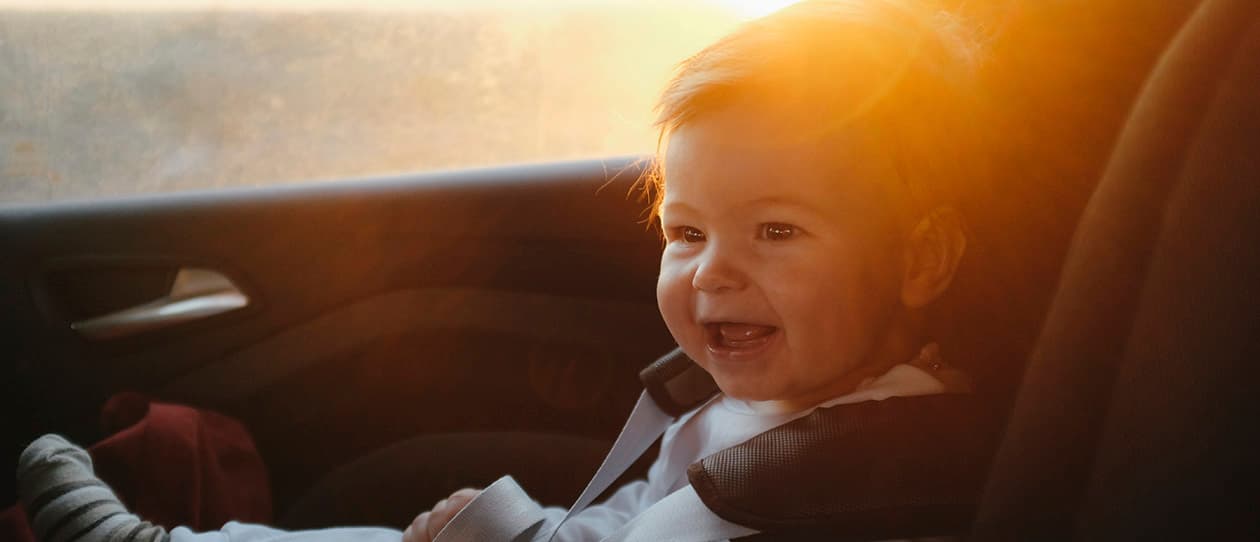
- Health hub/
- Kids Health/
- Up to speed on child car safety


The road toll in NSW in 2011 totalled 364 fatalities and 26, 366 injuries – an estimated 6,855 of which were serious. So clearly child safety measures when travelling in a car are vital. Yet what’s concerning is that things like appropriate and properly installed car seats are often overlooked.
Parents tend to drill pedestrian safety messages into kids but such vigilance when it comes to car safety restraints and booster seats is questionable. Past research carried out by the Royal Automobile Club of Victoria (RACV) found that more than 70 % of children’s car seats are not installed correctly – despite their ability, when age-appropriate and fitted correctly, to save lives.
In busy family life, car seat safety can be disregarded or de-prioritised. But if unsure or you have any nagging doubts on the safety or appropriateness of children’s car restraints, a brush up on what’s legally required is a good - and potentially lifesaving- exercise.
In mid-2010, the legislation for child car seat and safety restraints was updated across all Australian states and territories. For exact requirements and specific information go to your local road authority but the following provides a summarised guide:
Legal requirements
All child car seats and safety restraints sold in Australia must comply with the Australian Standard - AS/NZS1754, which should be clearly marked on the car seat/booster and double-checked at the time of purchase.
Although this standard offers a high level of protection, there is variance amongst products out there. Parents need to consider individual circumstances (i.e. space in car, number of children, if or how often car seat is moved etc) along with crash performance and the ease of use of individual seats. In NSW, the Roads and Traffic Authority (RTA) make these rating available via the “Safer Child Restraint” brochure.
Second hand car seats can save money but be cautious if pursuing this route. If there is visible wear and tear or if a seat’s history is unknown it may not be safe to use.
Children 0- 6 months old
Children must be seated in an approved rearward-facing child restraint or infant capsule – held in place by a seatbelt and top tether strap.
Six months to four years old
Children should be in an approved rear OR forward-facing restraint with an inbuilt harness - held in place by a seatbelt and top tether strap. Children under four can’t travel in the front seat of a vehicle with two or more rows.
It’s important for parents to keep in mind that children should stay in a rear-facing seat as long as possible as it’s the safest option. Just because a child is six months old does not mean they are ready to travel in a forward-facing seat, nor should a parent turn a child around just so they can smile or make eye contact with them whilst driving.
Four to seven years old
Children must be restrained in an approved forward-facing restraint or booster seat. If all back seats are occupied by children under four, a child between four and seven can occupy the front seat of a vehicle in a forward-facing restraint or booster seat but the rear of the car is the safer option.
Over seven years
Children should be kept in booster seats until they have reached a minimum of 145 cm, they can then move on to adult lap-sash seat belts (or a lap only belt if that is all that’s available and is fitted correctly).
Age is a guide only…
If a child is particularly tall or big for their age and you feel they have outgrown their car seat you may need to move onto the next stage. But before doing so consider:
- For inbuilt harness models – if the top slot of the strap of the harness is below the level of the child’s shoulder.
- Booster seats – if the child’s eye level is higher than the back (head rest part) of the booster seat. Or, is the child over 145 cm tall?
- Lap-sash seat belts – only for use once a child reaches 145cm tall. The lap section of the belt should be positioned over the hips (not riding high over tummy) and the sash should be position in the middle of the shoulder – not touching neck area.
Installation
When installing a child car restraint or booster seat, make sure it’s fitted correctly by following the manufacturers’ guidelines carefully. In the event of an accident, taking short cuts or hoping for the best could put children at greater risk of a serious injury - or worse. Consider the positioning of a seat in a car too. If your vehicle is equipped with airbags for example, kids’ car seats should be positioned at least 30 centimeters away. If in doubt about any aspect of installation take the time to visit an authorised fitting station in your local area and get an expert to fit your car seat and talk you through the process.
For further safety information
NSW
RTA Customer Service Enquiry- 13 22 13 or www.rta.nsw.gov.au
NRMA Technical Advice- 13 11 22 or www.mynrma.com.au
Victoria
RACV Motoring Advice Line, 03 9790 2190 or www.racv.com.au
TAC- www.howsafeisyourcar.com.au
Western Australia
RACWA- 13 17 03 or www.rac.com.au
Queensland
Queensland government – Transport and Main Roads- www.tmr.qld.gov.au
Tasmania
Department of Infrastructure, Energy and Resources- Transport- http://www.transport.tas.gov.au/
South Australia
Department for Transport, Energy and Infrastructure- www.dtei.sa.gov.au
Northern Territory
Northern Territory Transport Group- www.roadsafety.nt.gov.au
ACT
ACT Government Territory and Municipal Services- www.tams.act.gov.au
References available on request




